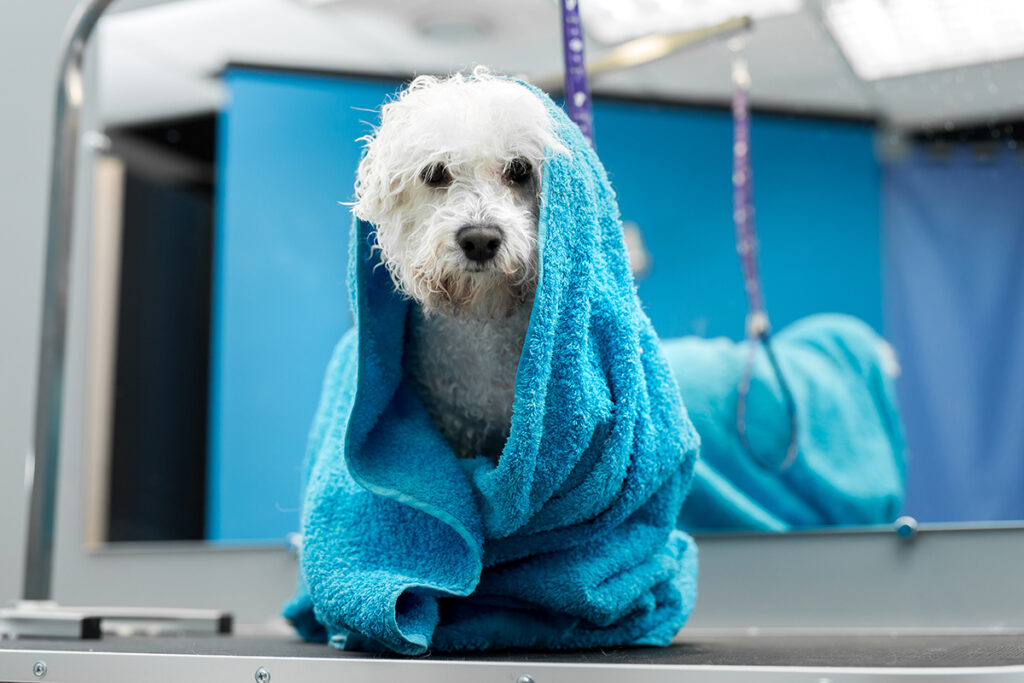
How often do you have to wash your dog? If you’re lucky to have a dog that doesn’t make issues out of getting washed, you’re saved a lot of dog drama already.
If you don’t joke with cleanliness in your home and you’ve mastered the techniques of washing a dog successfully, you may get the temptation to wash your dogs every time it gets dirty. But that would be a problem for your dog and you’d be wasting too much time.
Washing your dog regularly is crucial for everyone’s health, it’s a good practice of hygiene and can help you spot abnormalities in your dog early. But how much washing is too much?
Determining your dog’s washing routine requires a few considerations and careful observations, some of which includes:
Hair/Fur Size:
A good way to start your observation is to know how susceptible to dirt the hairs or furs of your dog can be. Is the hair long enough to protect its skin from dirt? If not you may need to bathe it more frequently than you’d want to do for a furry dog.
Activity:
Do you have dogs that want to explore things and not just sit at home? Active dogs are adorable to look, but they easily get infections from their environment. These dogs are more exposed to dirt during their activity than a dog with less active would do.
Location:
Some dog owners live in areas with more exposure to dust and dirt. You may want to consider this when designing the routine for washing your dog.
How oily is your dog’s skin? Some dogs need the oils produced naturally by their skin to grow hair and warm themselves, excessive bathing or washing can deprive dogs of oils and cause dry and irritated skin.
How Often Do you Have to Wash Your Dog?
Washing a dog is not bathing it. A bath (or dog grooming) is required for most dogs in at least one time in a month or even in three months. But a wash is done more frequently, you may wash it in a week and wait till the next week for another wash.
Helpful Tips to Get Your Dog Washed
You can try these helpful tips with your dog when its bath time to see what works for it.
Dog specific products: The safest way to bathe your dog is to use products and materials that are specific to dogs on it. Baby products may be suitable too since the baby-related products are usually mild. Dogs are best treated with natural shampoo to prevent irritation.
Prepare for the cleaning process before you take dogs to the bathroom or the spot for the cleaning. It’s a bad idea to leave a dog midway into its bath to take a towel or more shampoo.
Dog’s’ skin is quite sensitive, use lukewarm water in the cleaning process. Avoid hot or cold water.
Dogs are vulnerable to infections in the ear area. It is recommended to place cotton balls in the ears to prevent water from going in.
Dogs are best washed when they’re exhausted. You may take your dog out over long distances or play with it before washing.
You can train dogs to like baths and washing by rewarding them with a treat during and after bathing. You can play with it and make the dog have fun before the cleaning starts.
Adhere to the instructions of each product on the bottles.
Your dog may not be comfortable with a hairdryer, so use a towel instead. Place it over the dog to soak water from its body.
Help your dog to become familiar with the bathing environment. Be patient with the dog when it hesitates. Some dog owners may infuse the treat with CBD to ensure the dog is less anxious.
Consider getting advice from a veterinarian if you notice abnormalities on your dog. It may be as a result of irritations from one of the cleaning products or even more dangerous infections.
If your dog makes so much trouble when its bath time, you may need to take it to the professional dog groomers. They deal with many dogs daily and would have more knowledge of the most suitable products for different skin types.
Cleaning your dog is not only about how many times you can dedicate to its cleanliness but how safe it is to wash your dog. It helps to consider the type of fur, skin condition, and how your dog interacts with its environment when you’re designing a routine.
